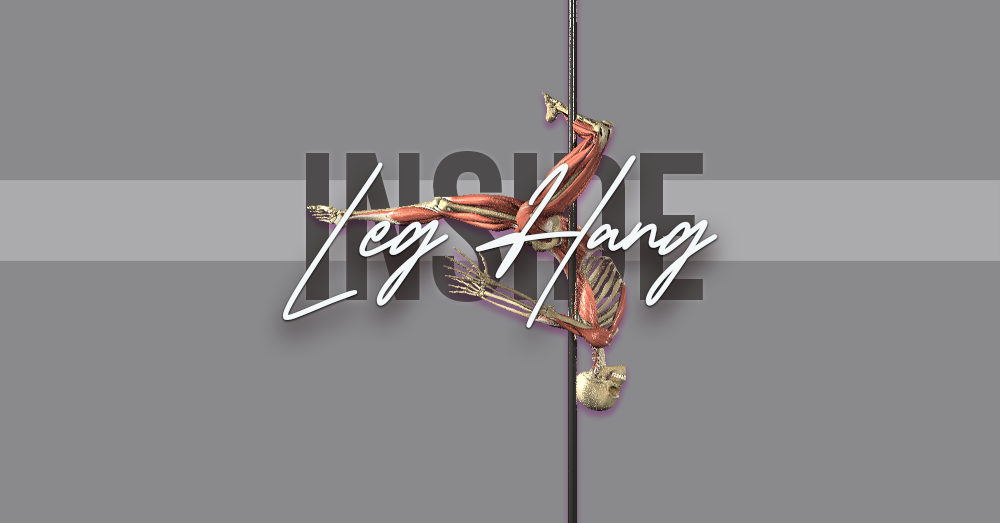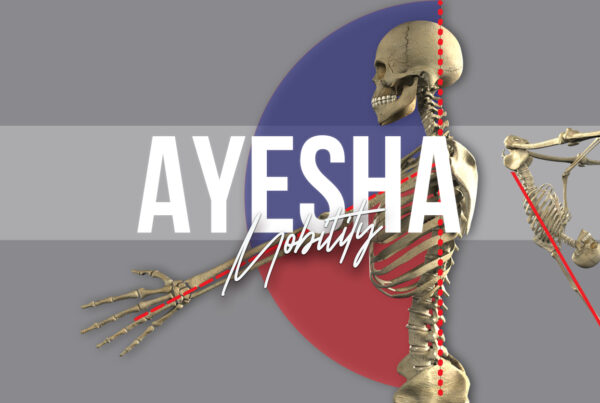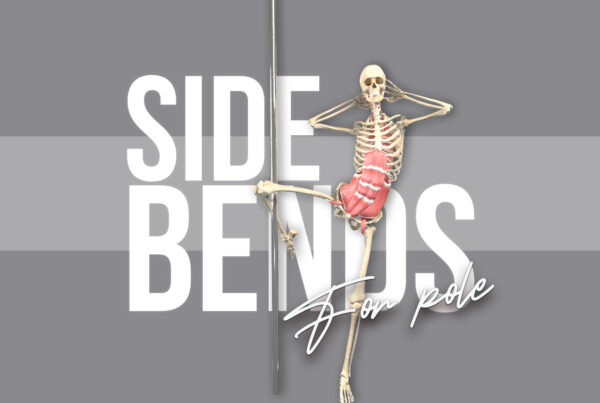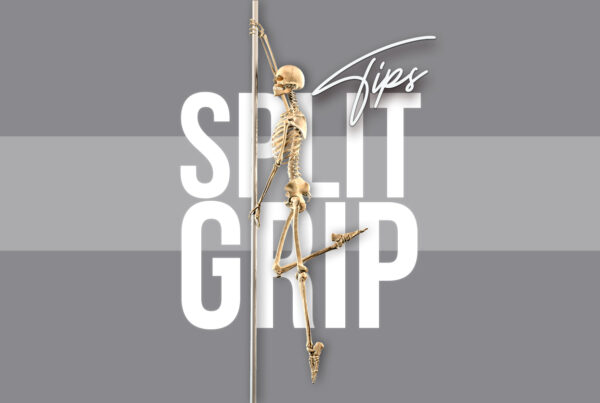Working on your inside leg hang?
Maybe you’re still in the early stages of trying to figure this one out – or maybe you’ve finally nailed the elusive ‘oh-so-ouchy’ one and are looking for ways to improve the lines and next-level that shizzle!
Either way, if you’re all about that inside leg hang right now – this one’s for you, friend!
In this post, we’ll do a quick overview of the anatomy of the inside leg hang – this will help you explore and troubleshoot what might be stalling your inside leg hang progress!
When you’re done pole-nerding with me here, head over to my next post for my Inside Leg Hang Workout!
If you’d rather watch than read, here’s the quick 90 second run-down of this blog post:
4 key elements of the inside leg hang
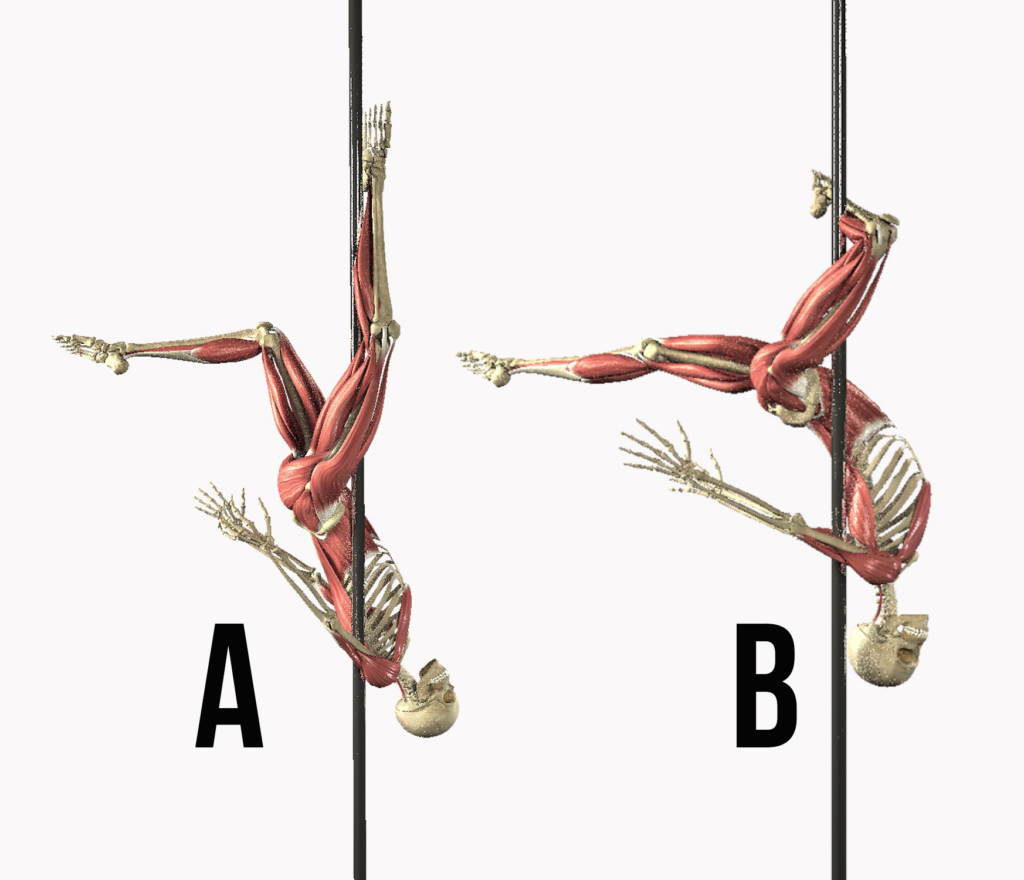
Both these inside leg hangs are legit #awesome, but what is it that makes the lines of Leg Hang B just so…. 🤤? Exploring the key differences between these two positions will help us get to know the inside leg hang a little more.
Inside leg hang #1 Spinal extension
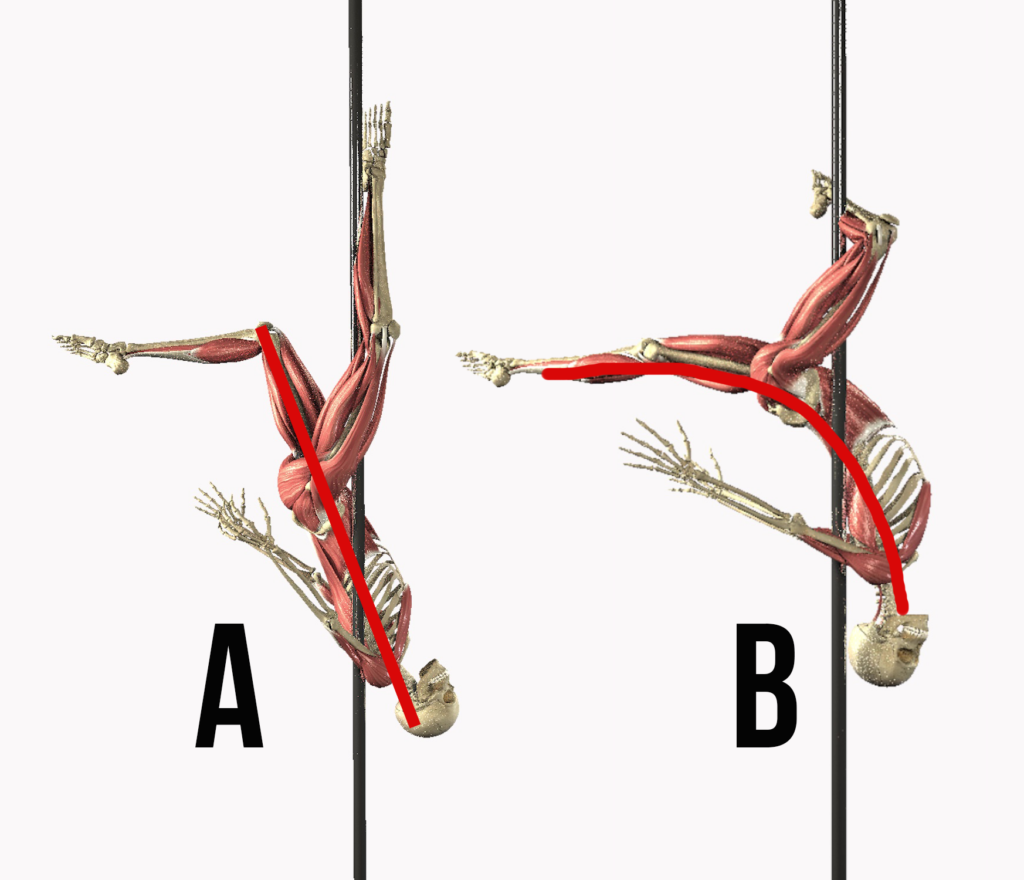
In leg hang A, see how our pole dancing skelly is pretty vertical – the pole’s running almost across the front of the tummy and side of the torso, whereas in Leg Hang B, our skelly has moved into a position of spinal extension (aka back bend), with their pelvis anteriorly tilted.
That more extended position helps secure the grip point of the pole right in that ‘squishy sweet spot’ between the ribs and the pelvis.
The primary spinal extensor muscles are our erector spinae and quadratus lumborum, which help us move into and control that back bend.
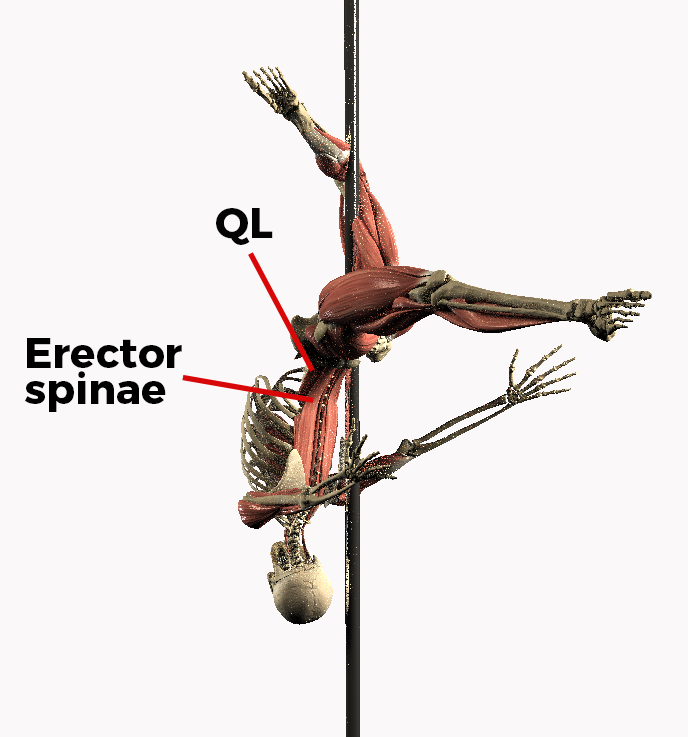
Inside leg hang #2 Hip extension (back leg)
Also notice how in Leg Hang B our Skelly has also extended that back leg away from the pole – the extension of that back leg helps continue that line of spinal extension because, well… #lines.
The key muscles that help us extend that back leg are our glutes and hamstrings. The opposing muscles (hip flexors) are lengthened.
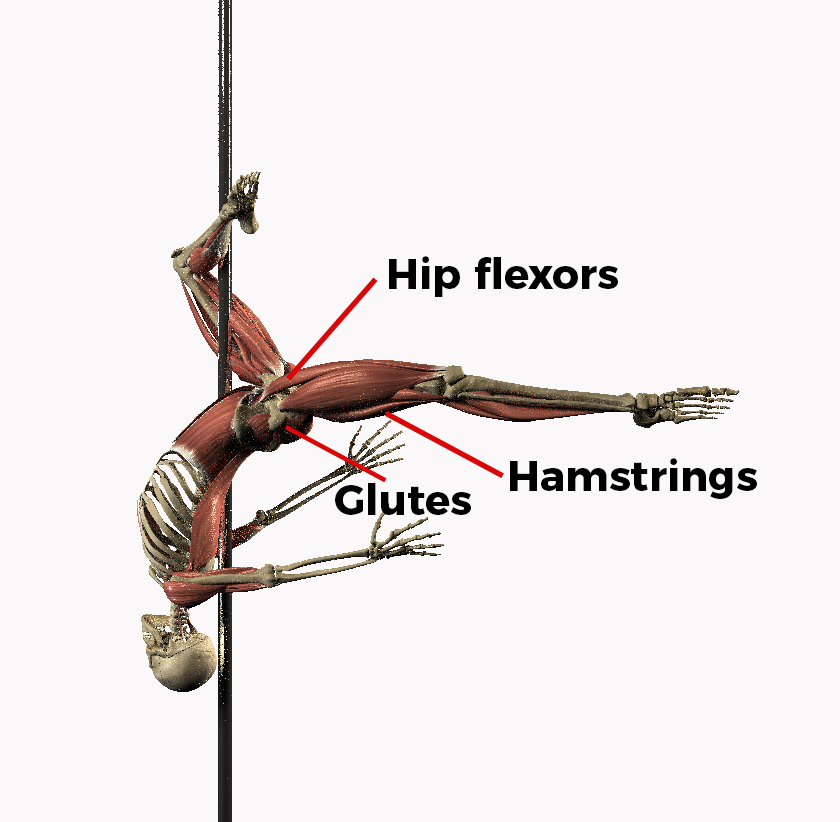
Inside leg hang #3 Hip flexion (inside leg)
The more anteriorly tilted position of Skelly B’s pelvis puts the inside leg in a greater degree of hip flexion.
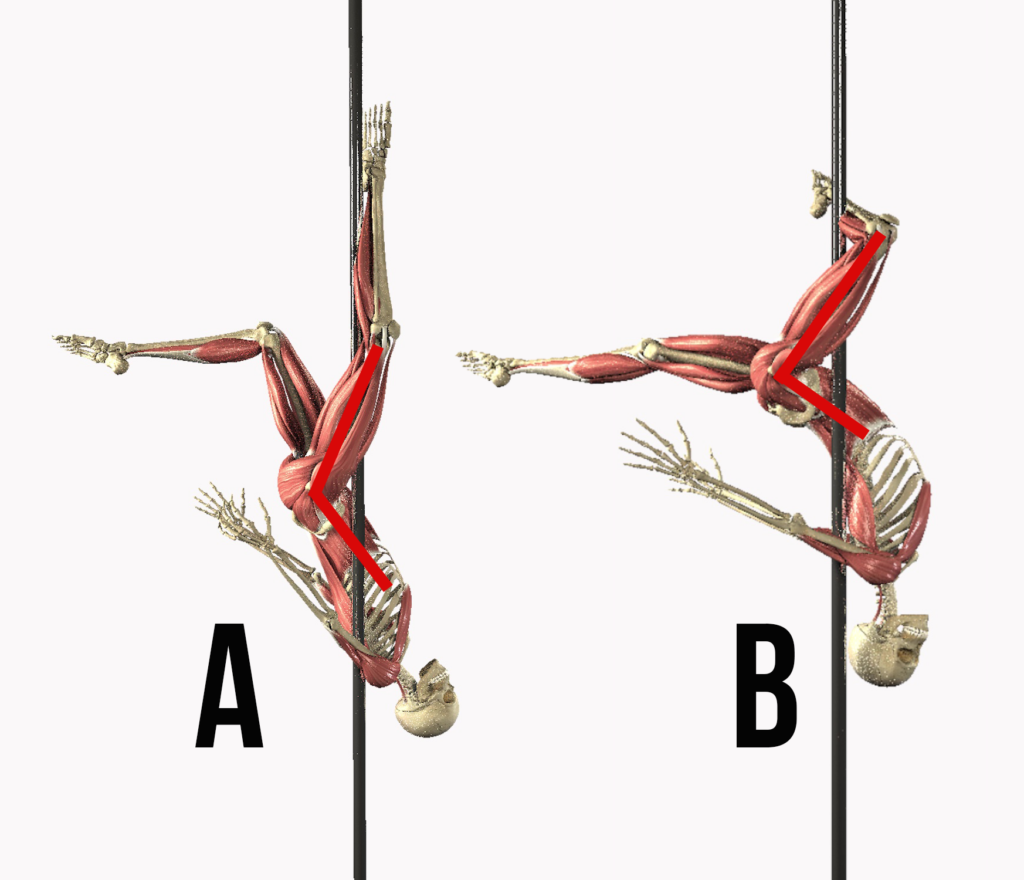
It’s our hip flexors which bring our leg into this position of hip flexion, so we need strength there, especially when actively moving the inside leg into position – but we also need some flexibility in the opposing muscle group (hamstrings) too!
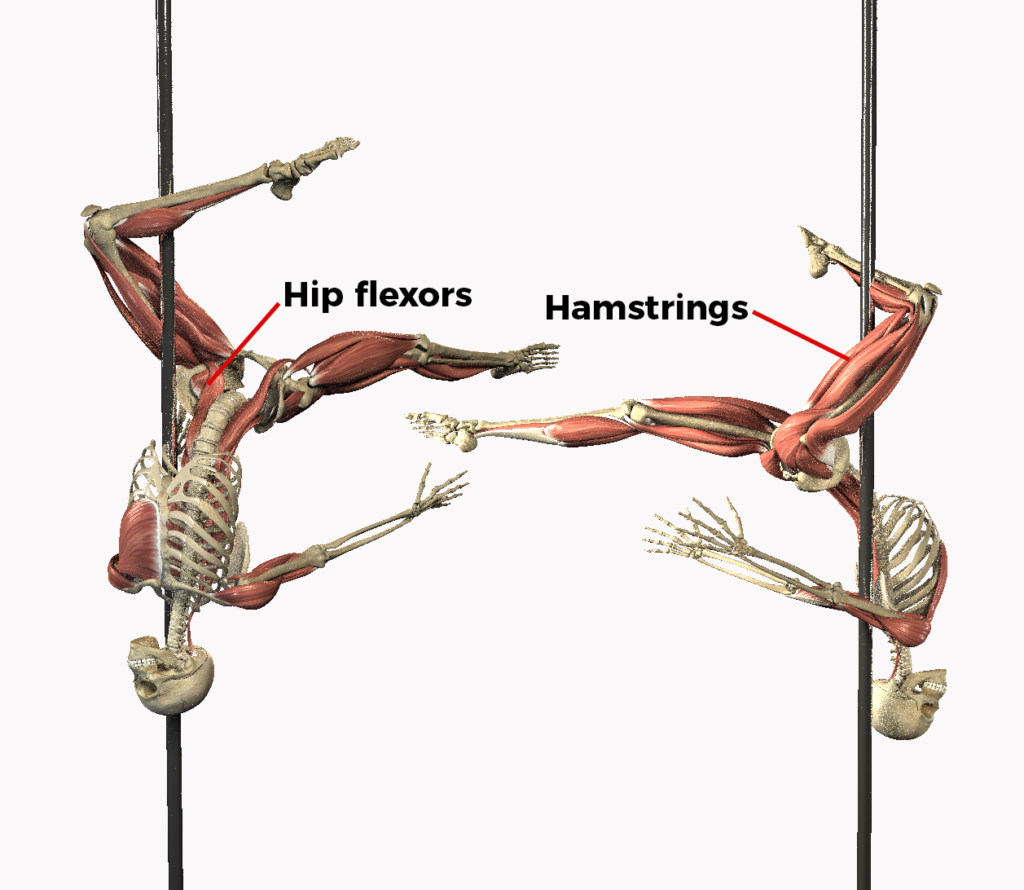
The more abducted the leg is, the more that stretch will focus on the medial hamstrings and the adductors (the muscles of our inner thigh), too!
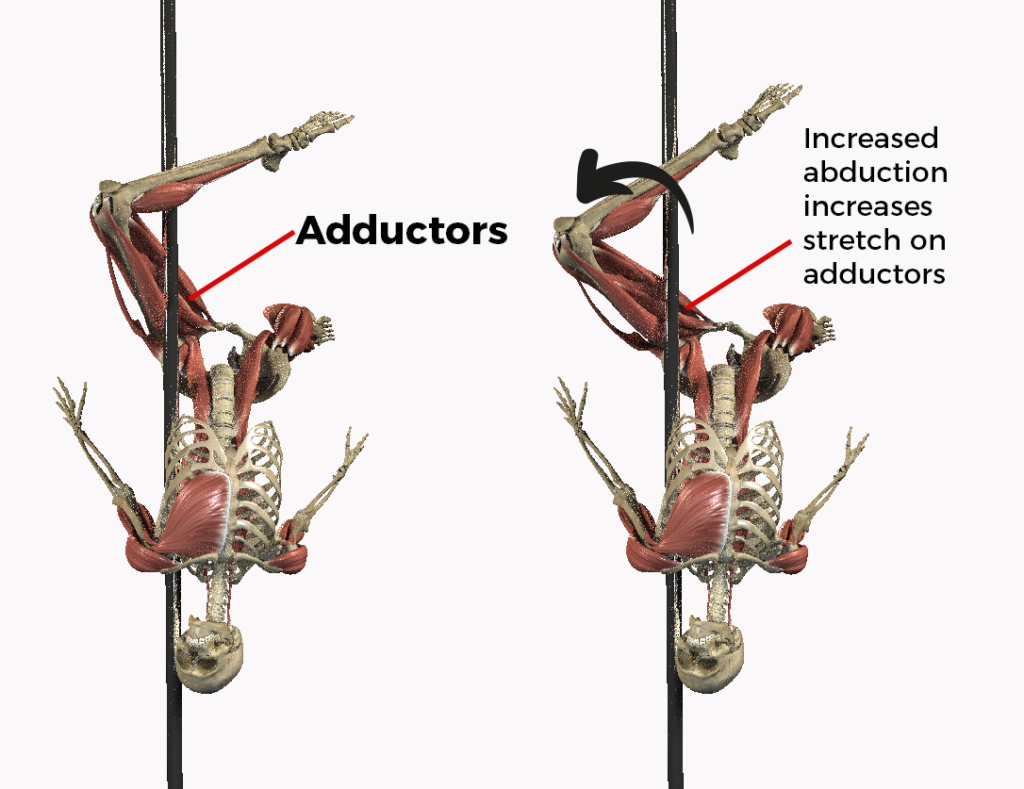
Inside leg hang #4 Hip rotation (inside leg)
Last but absolutely not least, #4 on my list is hip rotation!
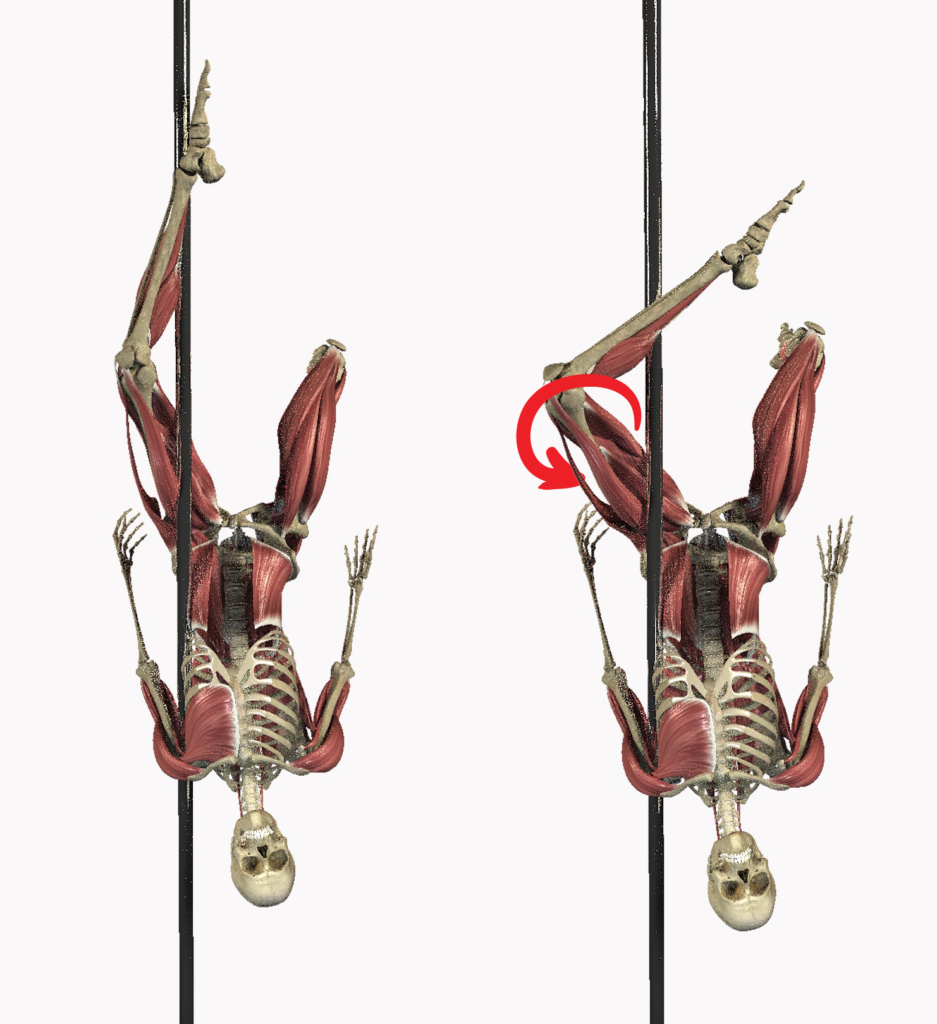
In both positions, our hip (leg) is externally rotated. Side note: once we’re in position on the pole, the engagement of that inside leg may be more towards internal rotation – although this really depends on your flexibility and the position of your leg!
But, about that knee bend and the position of the inside leg… you don’t HAVE to bend your leg as much as Skelly B. This isn’t a ‘right vs wrong’ thing. As with all these different elements, you need to find the position and engagement that works best for you and your body!
You might feel more secure with your leg more bent or more straight in your inside leg hang, but the greater range and control you have in hip rotation, the more options you’ll have to play with when it comes to the positioning of that inside leg, to help you find your secure inside leg hang ‘sweet spot’.
I’ve found that a lack of external hip rotation (range and control) is a key limiting factor for the majority of clients I’ve had struggling with their inside leg hang. Working on flexibility, awareness and control in both internal and external hip rotation, but with a strong focus on external rotation really can unlock the door to a comfortable, secure and beautiful inside leg hang!
How to get from A to B?
A solid inside leg hang training mission will include:
- ‘Off the pole’ work on all 4 of those key elements with a strong focus on whichever areas are your weakest links (hint: quite often it’s hip rotation!).
- ‘On the pole’ conditioning, using gradual progressions – particularly those exercises that help you feel and hold that more extended position while you build strength there and get used to the grip points.
I hope this post has helped demystify the inside leg hang for those of you who are working on / towards it!
Now, if you’re ready to put all that pole nerding into action, shimmy on over to my next post for my hip rotation workout for your inside leg hang!
Wanna learn more about how strength and conditioning can help you progress in pole? Check out my book, Strength and Conditioning for Pole! It contains a full framework for you to create a comprehensive training program for pole based on your own unique strengths and weaknesses!


